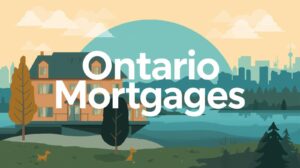Key Takeaways
- Payment Shock is Real: A significant majority (estimated at 60%) of Canadian mortgage holders renewing in 2025 and 2026 are projected to face higher monthly payments, particularly those coming off low, five-year fixed rates.
- The 2026 Rate Outlook: While the Bank of Canada (BoC) has likely finished or is nearing the end of its rate-cutting cycle, the “new normal” for rates is projected to be higher than the 2020-2021 lows. Most major banks forecast the BoC policy rate to settle between 2.00% and 2.75% through 2026. This would put mortgages rates around the 3.50% – 4.00% range (depending on rate and term options).
- Action is Key: The most important step for homeowners facing renewal is to act early—review your options, pre-qualify for a rate hold (usually up to 120 days), and explore amortization adjustments.
Table of Contents
- The New Reality of Mortgage Affordability
- The Coming Renewal Wave: What to Expect
- Canadian Interest Rate Predictions for 2026
- Proactive Strategies for Homeowners
- Snippet From our Latest Podcast Discussion
- Frequently Asked Questions (FAQs)
1. The New Reality of Mortgage Affordability
For Canadian households, the era of ultra-low, 2% mortgages is firmly in the past. Today, “affordability” is defined by two key factors: the stress test and the high cost of carrying debt.
The Stress Test: Still the Gatekeeper
Even as market rates fluctuate, the Mortgage Stress Test remains the primary barrier to entry for new buyers and a factor in re-qualifying for a refinanced mortgage. Federally regulated lenders must qualify borrowers at the higher of:
- 5.25%
- Your contract rate plus 2%
This stress test ensures that, on paper, you can handle a higher future rate, which offers a critical buffer in today’s unpredictable market.
The Debt Service Ratio Challenge
High rates have driven up the Debt Service Ratio (DSR), which measures the percentage of household income used to cover debt payments. As monthly mortgage costs rise, a greater share of income is consumed by debt, squeezing the budget for essentials and savings.
The crucial advice for new buyers is simple: do not max out your borrowing capacity. Aim for a payment well below what the stress test qualifies you for.
2. The Coming Renewal Wave: What to Expect
The most pressing issue in the Canadian market is the massive volume of mortgages originated during the low-rate pandemic years (2020-2022) that are set to renew over 2025 and 2026.
The Bank of Canada estimates that approximately 60% of all outstanding mortgages will renew in this period. The impact, often called “Payment Shock,” is not uniform.
Payment Shock by Mortgage Type
| Mortgage Type Renewing | Renewal Date | Projected Average Payment Increase (vs. late 2024) | Key Strategy |
| 5-Year Fixed (from 2020/2021 lows) | 2025-2026 | 15% – 20% | Act Early, Shop Lenders |
| Variable-Rate, Fixed-Payment (VRFP) | 2026 | Up to 40%+ for a small, high-risk group; wide variability for others. | Reset Amortization, Lump Sum Payment |
| Variable-Rate, Variable-Payment | Ongoing | 5% – 7% Decrease (due to BoC rate cuts) | Maintain payments to rebuild equity faster |
A more visual representation of this would be:
The VRFP Amortization Trap
Variable-Rate, Fixed-Payment holders often face the largest shock because their fixed payments were not high enough to cover the surging interest during the rate-hike cycle. This led to negative amortization (the balance owed grew). At renewal, these borrowers must reset their payments to cover the full principal and interest over the remaining term, resulting in steep jumps.
3. Canadian Interest Rate Predictions for 2026
The trajectory of the Bank of Canada (BoC) Overnight Rate dictates the direction of the Prime Rate (which controls variable mortgages) and the 5-year Government of Canada bond yield (which influences fixed rates).
As of late 2025, the BoC has made several cuts, easing the pressure from the 2023 peak. However, most economists are coalescing around a new range for 2026, indicating that the low rates of the 2010s are unlikely to return.
Major Bank Rate Forecasts (End of 2026)
| Bank | BoC Overnight Rate Forecast | Commentary |
| RBC / TD / CIBC | 2.25% – 2.50% | Rates stabilize at the “lower-neutral” range. |
| BMO | 2.00% – 2.25% | Expects a final cut in early 2026 before holding steady. |
| Scotiabank | 2.50% – 2.75% | Believes rates may need to move slightly higher if inflation remains sticky. |
A more visual representation of this would be:
Key Prediction: Expect fixed mortgage rates to settle in the 3.8% – 4.5% range and variable rates in the 3.5% – 4.2% range through 2026, barring any major global economic disruption.
4. Proactive Strategies for Homeowners
Don’t wait for your renewal notice to arrive! Your mortgage is a financial tool that requires proactive management.
For Those Facing Renewal Soon (2025-2026)
- Get a Rate Hold (120 Days): Lock in a new rate with a new lender as early as four months before your renewal date. This protects you if rates rise but allows you to take a lower rate if they fall before closing.
- Negotiate Hard: Your current lender will send you a renewal offer, but it is rarely their best rate. Use a broker use their knowledge of rates/lenders to force your existing lender to improve their offer, or refinance if your existing lender won’t budge.
- Adjust Amortization: If the payment shock is too great, extending your amortization period (e.g., from 25 to 30 years) can significantly lower your monthly payment. Be aware that this increases the total interest paid over the life of the loan. Also note that in come cased, lender can allow amortization periods up to 35-years.
For Improving Affordability Now
- Increase Payment Frequency: Switching from monthly to accelerated bi-weekly payments effectively adds one extra monthly payment per year. This small adjustment can cut years off your mortgage and save thousands in interest.
- Use Pre-payment Privileges: Apply any annual bonus, tax refund, or lump sum savings directly to the principal using your pre-payment privileges. This is the most efficient way to reduce the amount of interest you pay.
- Consolidate High-Interest Debt: If you have credit card or other high-interest debt, consider refinancing to consolidate it into your mortgage. The lower mortgage interest rate can drastically reduce your overall monthly payments.
5. Snippet From our Latest Podcast Discussion
6. Frequently Asked Questions (FAQs)
Q: Will mortgage rates drop back down to 2%?
A: The consensus among major economists is no. The BoC’s neutral rate—the rate that doesn’t stimulate or restrict the economy—is estimated to be much higher than the pandemic-era lows. Rates in the 3-5% range are considered the “new normal” for the foreseeable future.
Q: Does the mortgage stress test apply when I renew?
A: Generally, no, if you are renewing with your existing lender and your loan has not materially changed (i.e., you are not adding a significant amount of new debt). However, you must re-qualify with the stress test if you switch to a new lender or if you refinance to take out equity (unless you qualify for the “switch/transfer” program, which is only possible if your mortgage was originally high ratio-insured).
Q: What is the best mortgage term to choose in this environment?
A: This is highly personal. With high-rate uncertainty, many borrowers are opting for shorter terms (1, 2, or 3 years) instead of the traditional five-year fixed. This strategy is a gamble that rates will be lower when the shorter term expires, allowing you to lock into a better rate sooner. However, we’re seeing a large uptick in 5 year variable mortgages once more, given that the BoC rate cuts have widened the gap between variable and fixed rates making them an attractive option once again.
About the Author: Neil Drepaul
Neil Drepaul is a Co-Owner and Mortgage Broker at Canadian Mortgage Services. With over 13 years of experience navigating the complexities of the Canadian lending landscape, Neil specializes in helping homeowners and buyers develop proactive renewal strategies and optimize their debt structure in challenging economic climates. His commitment is to ensuring clients not only secure the best rates but also build long-term financial resilience.
Contact us today at (905) 455-5005.


